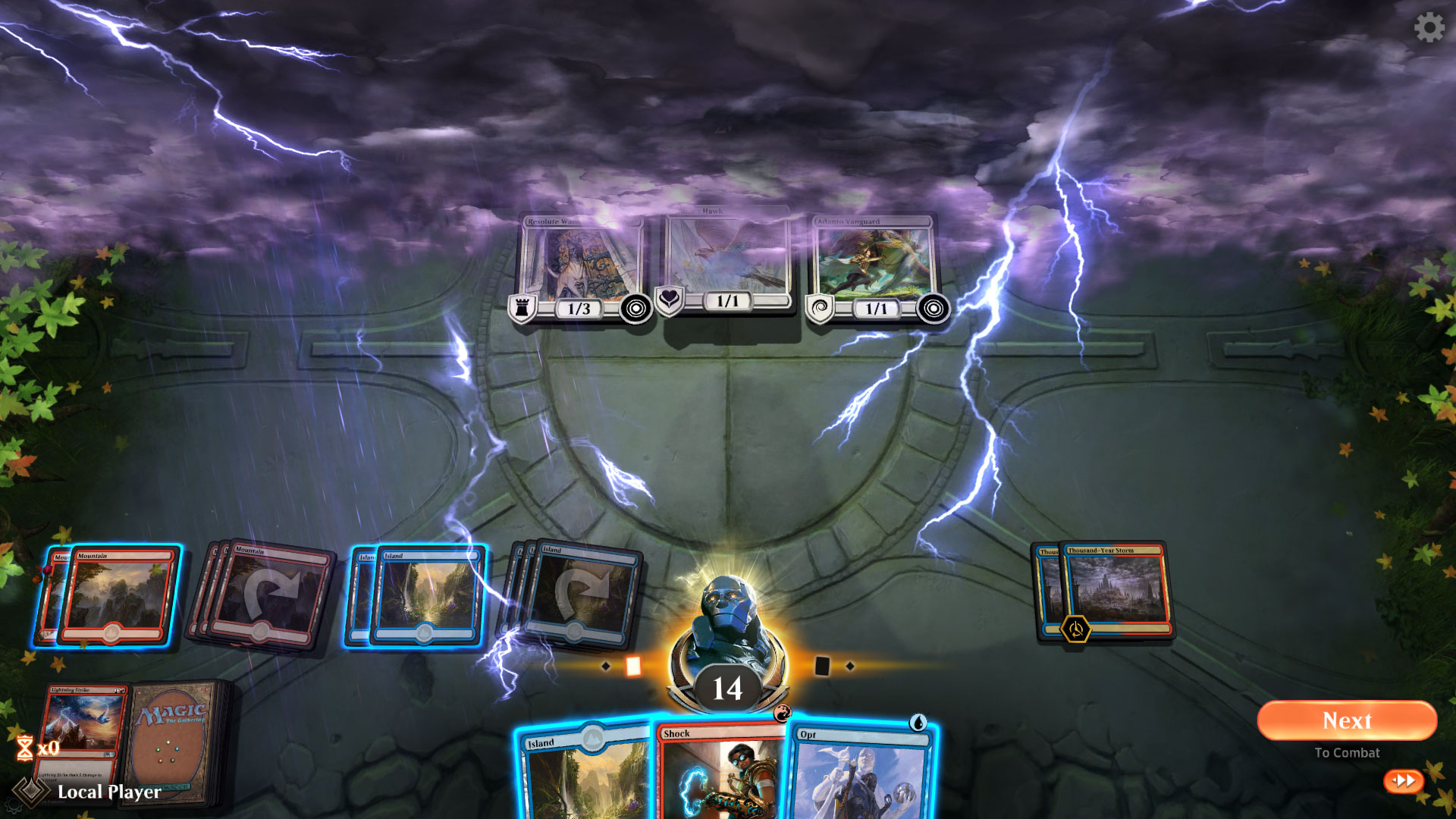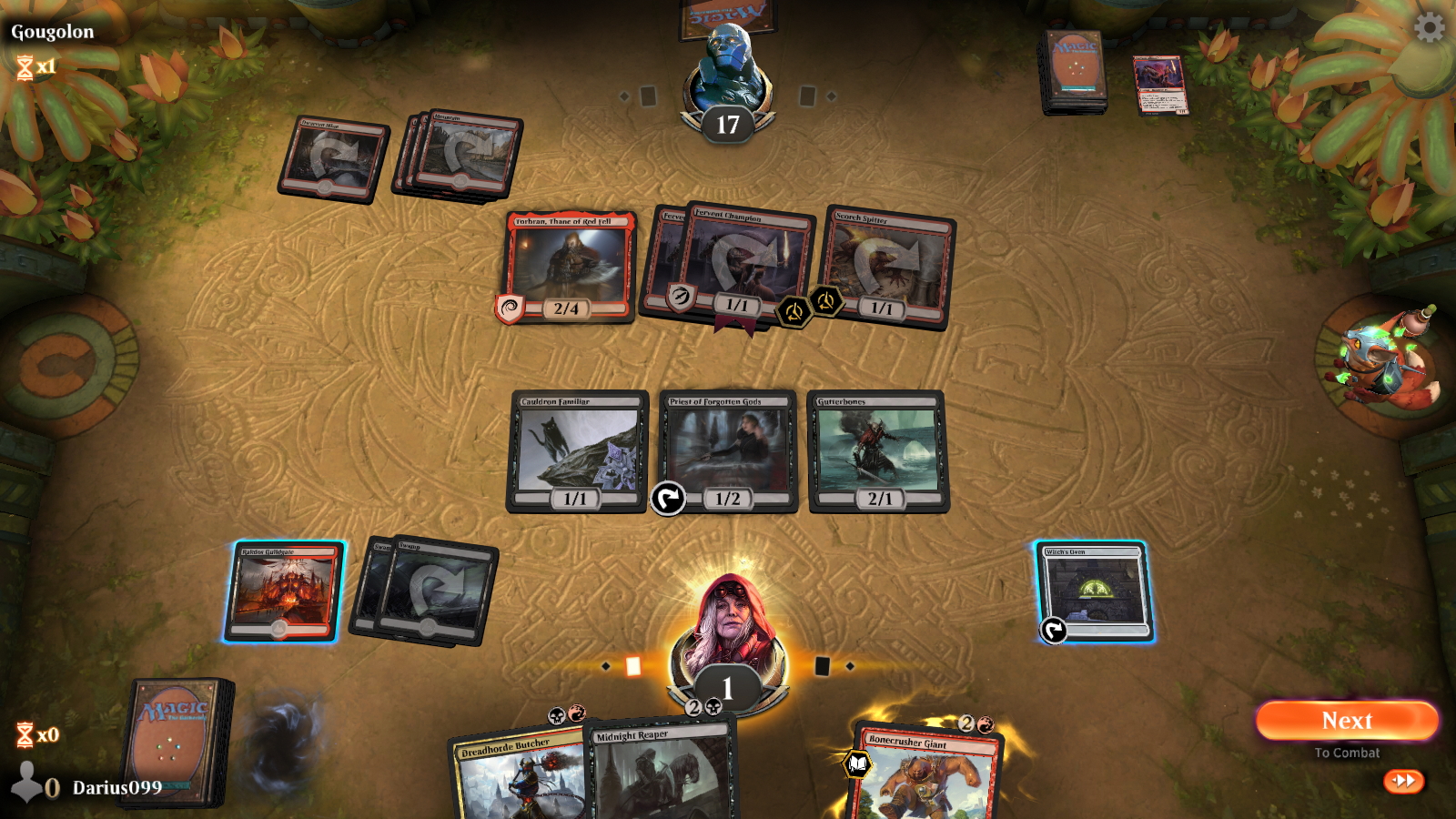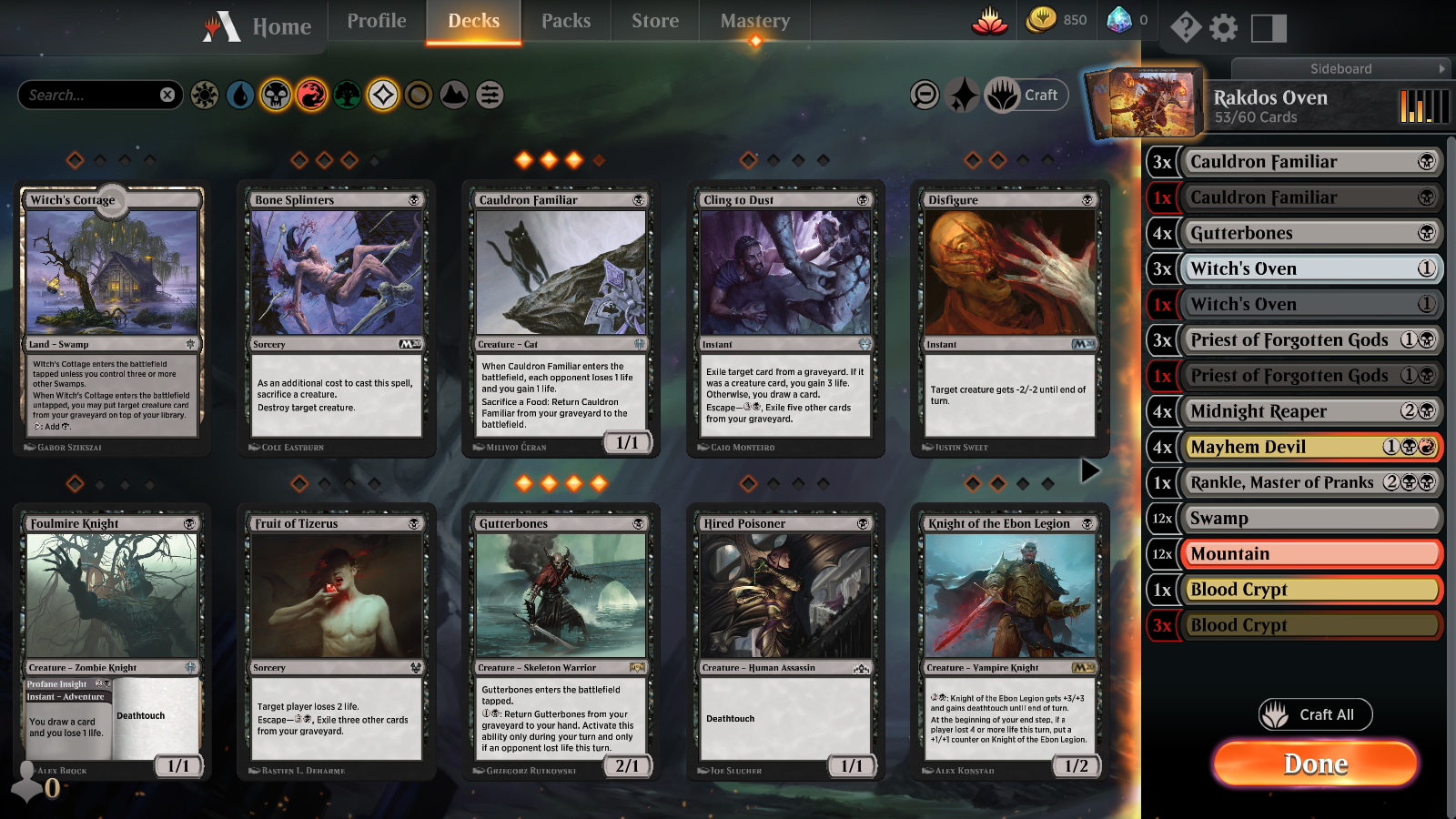The best Magic: The Gathering Arena decks
Only above standard will do.

What's the best MTG Arena decks? Given the constantly shifting landscape of Wizards of the Coast's card game—such as the addition of Theros Beyond Death—it's a difficult question to answer.
Nevertheless, I’ve reflected on match results, community discussions, and my own personal magical experiences to explore how the current meta is developing. Let’s go over what exactly I found: here's the best MTG Arena deck for you.
- MTG Arena codes: get free cards and cosmetics
- MTG Arena beginner guide: start your battles right
What are the best MTG Arena deck archetypes?
It's a diverse field in standard right now: with Theros on the scene, there isn’t really a settled top tier. Regardless, here are some popular archetypes for your own inspiration.
Adventure decks
These are based around the adventure cards from Thrones of Eldraine. The core cards are Lucky Clover and Edgewall Innkeeper, both of which generate extra value and card advantage from all your adventures. Landing an early Innkeeper and Clover lets you keep control of the board and out-trade your opponent's threats. Depending on which colors an Adventure deck pairs with green, the rest of the list will be packed with more adventure cards, like Bonecrusher Giant and Murderous Rider.
GW Auras
This is based around building a single powerful threat and trying to protect it - that way it can deal one or two big attacks to win the game. Setessan Champion and Season of Growth are the engine that generates card advantage and keeps your hand full of new aura enchantments. The Champion can even be a threat without carrying any auras. Paradise Druid is the best target for your auras with hexproof. A range of actual auras appear in the deck, but the real star is All That Glitters.
The biggest gaming news, reviews and hardware deals
Keep up to date with the most important stories and the best deals, as picked by the PC Gamer team.
UW Control
This is one of the better control options with stalwart Teferi, Time Raveler. Protecting the battlefield with various counter spells and board wipes, UW Control seeks to unleash a single good threat, nearly always—Dream Trawler—and then keep anything from dealing with it while it does its work. Time Wipe is also a big star as it reels a utility creature or big threat back in while clearing away problems.
Jeskai Fires
A dangerous deck when its namesake is in play, this combination uses Fires of Invention to set up explosive turns with Cavalier of Gales, Cavalier of Flame, and other significant threats. Backing this play style again is Teferi, Time Raveler and the excellent Deafening Clarion, which can contribute 20-point life swings while also clearing away opposing threats and piles of creature tokens.
Oven decks
Oven decks seek to grind out value using Witch’s Oven and Cauldron Familiar in an endless loop of cat-lifedrain. Different versions of the deck usually either go into red and lean more into a general sacrifice gameplan with Mayhem Devil and Priest of Forgotten Gods. Or they go green to focus on food generation with Trail of Crumbs, Gilded Goose, and Wicked Wolf. Both options perform well in longer matches, where they tend to build larger and larger advantages as Witch’s Oven accrues value.
Mono-Red Aggro
This is the yardstick all decks must measure their speed of play against. Fast and aggressive threats like Scorch Spitter, Runaway Steam-Kin, and Fervent Champion form its core, while Light Up the Stage maintains the pressure. As the big finisher, Embercleave usually ends the game the turn immediately during an attack, but it can also re-equip to Fervent Champion for free later if it loses its first bearer.
Simic Ramp
This deck survives despite the bans that hit its powerful cards, and it even has a new staple in Uro, Titan of Nature’s Wrath. Generating card advantage and quickly ramping into huge threats is the order of the day here, and that plan starts with Growth Spiral. Nissa, Who Shakes the World brings the power by doubling down on your ramp plan while also generating threats or blockers. Hydroid Krasis is the backbone: it's a potent finisher, a way to stall while you ramp, and a means of drawing necessary threats.

MTG Arena deck examples
I’ve put together a pair of deck lists for two of the archetypes I outlined above, both of which are fairly typical. Let’s go over them in detail.
GW Auras
Creatures
- 4x Alseid of Life’s Bounty
- 2x Bronzehide Lion
- 2x Paradise Druid
- 4x Setessan Champion
- 2x Siona, Captain of the Pyleas
- 2x Transcendent Envoy
Instants
- 4x Karametra’s Blessing
Enchantments
- 4x All That Glitters
- 4x Season of Growth
- 4x Sentinel’s Eyes
- 2x Sentinel’s Mark
- 4x Setessan Training
Lands
- 6x Forest
- 8x Plains
- 4x Temple Garden
- 4x Temple of Plenty
The gameplan with GW Auras is to always be aggressive and protect the target of all your auras, while keeping our hand stocked thanks to card advantage engines, Setessan Champion and Season of Growth. Alseid of Life’s Bounty gives us an answer to all kinds of removal, and helps push damage through, just don’t forget it will knock your auras off if you choose green or white.
Bronzehide Lion is a bit mana hungry, but serves well as both an aura target and a returning aura as a means of protecting another target. Siona, Captain of the Pyleas is another choice at the top end of our shallow mana curve, but she provides a lot of value in retrieving a choice aura and then giving us fodder to sacrifice to our opponents, such as Doom Foretold.
Transcendent Envoy has built-in evasion, which makes it another good choice to carry our auras, and it helps reduce the cost of a few of our two-cost auras down to just one.
Karametra’s Blessing is powerful and provides a way to save our big threat from most removals, and it can even help push through a couple of extra points of damage to finish a game. For our aura package, Setessan Training cantrips, replaces itself, and gives trample—necessary to break through blockers and close games out before they drag on too long. We also have Sentinel’s Eyes, which gives vigilance to help escape in the late game, and Sentinel’s Mark, which also gives vigilance. Both are excellent for our Paradise Druid.

Rakdos Oven
Artifacts
- 4 Witch's Oven
Creatures
- 4 Cauldron Familiar
- 4 Gutterbones
- 4 Mayhem Devil
- 4 Midnight Reaper
- 4 Priest of Forgotten Gods
- 1 Rankle, Master of Pranks
- 3 Rix Maadi Reveler
- 4 Woe Strider
Sorceries
- 4 Claim the Firstborn
Lands
- 4 Blood Crypt
- 3 Castle Locthwain
- 4 Fabled Passage
- 5 Mountain
- 6 Swamp
- 2 Temple of Malice
Rakdos Oven isn’t as fast as some other decks in the format, but it's difficult to stop once it gets going. The goal is to use Witch's Oven to sacrifice Cauldron Familiar, Gutterbones, and anything else superfluous to get food tokens. This combines with the Familiar’s 'enter the battlefield' ability, and the powerful Mayhem Devil to create constant damage. Sacrificing and returning a Familiar with the Oven nets you two damage from the Devil—one each from the food and Familiar being sacrificed—plus damage from the Familiar itself.
Midnight Reaper ensures your sacrifices also refill your hand, while Priest of Forgotten Gods keeps your opponents board clear at the cost of a temporary graveyard trip by your spare cats and skeletons. Rix Maadi Reveler is great at replacing a used-up hand, and you have plenty of things you don’t mind discarding if it isn’t already empty. Woe Strider does great work giving a token to sacrifice, and lets you scry using Gutterbones.
And of course, there's nothing better than turning your opponent's creatures into fresh cookies in the oven with Claim the Firstborn.

Sarah is a contributor for PC Gamer, formerly of TechRadar Gaming. With five years of experience writing freelance for several publications, she's covered every genre imaginable and probably a few she made up. She has a passion for diversity and the way different genres can be sandboxes for creativity and emergent storytelling, and loves worldbuilding. With thousands of hours in League of Legends, Overwatch, Minecraft, and countless survival, strategy, roguelike, and RPG entries, she still finds time for offline hobbies like tabletop RPGs, wargaming, miniatures painting, and hockey.

